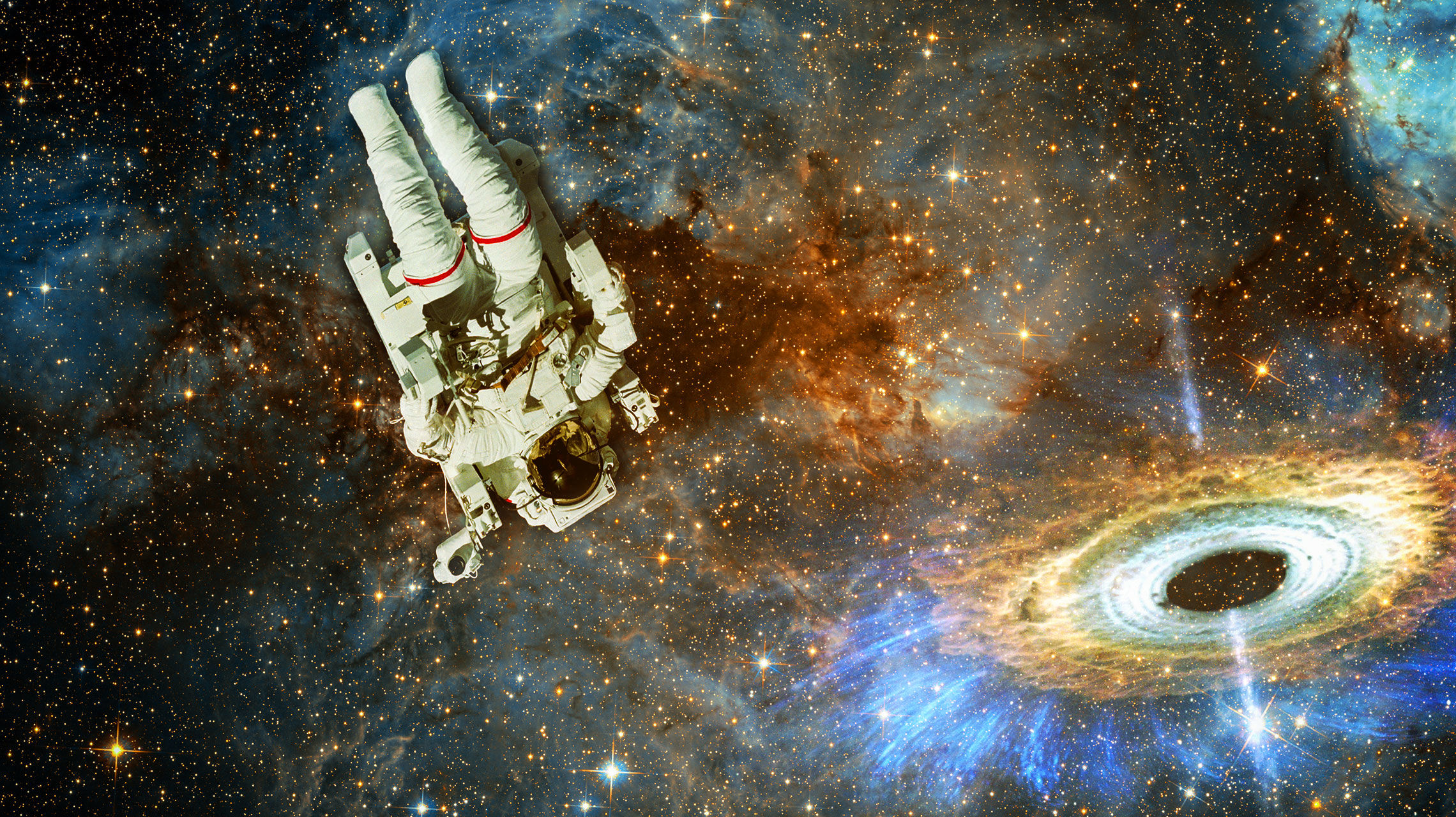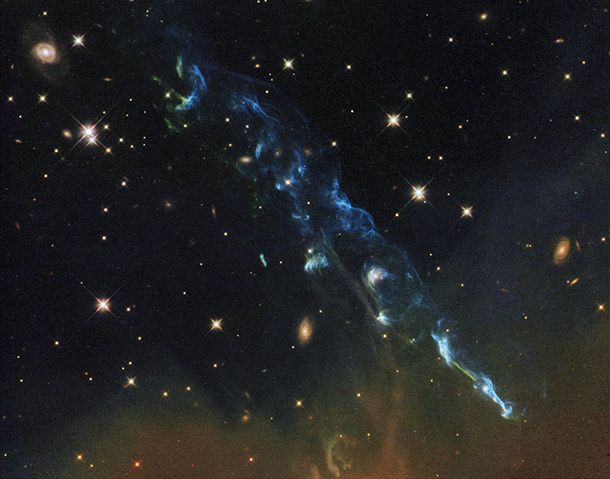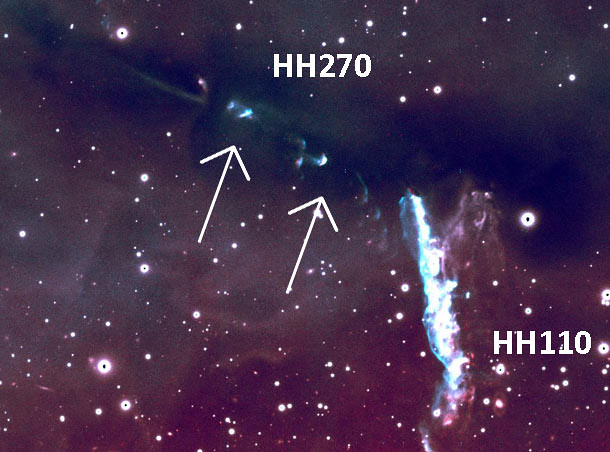Create a free profile to get unlimited access to exclusive videos, sweepstakes, and more!
Newborn star makes a cosmic bank shot

Like human babies, newborn stars tend to blast out gas from both ends. Unlike infant people, when stars do it it's because of things like angular momentum, magnetic fields, and radiation pressure.
Also unlike human babies, when stars blast out gas it's incredibly beautiful. Like in the case of HH110, seen here using the Hubble Space Telescope:
[Click to encollimate -- and you want to -- or grab the huger 4000 x 3000 pixel version.]
Breathtaking, isn't it? Ironically, given the analogy above.
Massive newborn stars are hot, bright, spin rapidly, and have strong magnetic fields. As matter flows away from the star, all of these combine to form two tornado-like structures, vast and violent, erupting away from the star's poles. These two focused beams (astronomers call them "jets") can scream away from the star at hundreds of kilometers per second. As a class, we call them Herbig-Haro objects, or HH objects for short.
HH110 is a bit of an oddball since it only appears to have one beam of material instead of two. It's also wider than most HH jets, and appears more turbulent, with lots of twisty structures and knots of material in it. And now we think we know why: it's a bit of a fraud. It's not its own HH object, but part of another!
Less than a light year away is a fainter HH object, called HH270. One of the jets from HH270 is pointed right at HH110, which seems like a pretty big coincidence. And it probably isn't: the thinking now is that this HH270 jet is slamming into a dense cloud of material and getting deflected, and it's this material splattering away that's forming HH110! I've labeled the image above -- taken using the Subaru telescope -- to make this more clear (from the CASA website; there are images showing more of that region of space and it's lousy with HH objects).
This idea makes a lot of sense, and explains the weird structure in HH110. Dense clouds of material are common near newborn stars -- after all, stars form from gas clouds! -- and it's not too surprising that at some point a jet will slam in to one. You can even see the cloud in question in the picture; it's the area which is black. The material there is so thick it's blocking the light from stars behind it, so we see it because of what's not there.
That's pretty amazing. A light-years-long stream of gas beaming away from a star happens to hit a gas cloud, deflects in another direction, and the resulting chaotic mess gets bright enough to actually steal the limelight from the original event!
Sometimes, even by accident, the Universe makes beauty, and we can stand back in awe of it. Even better -- we can figure out why. Science! I love this stuff.
Image credits: NASA, ESA and the Hubble Heritage team (STScI/AURA); Subaru/Bo Reipurth
Related Posts:
- Hubble celebrates 20 years in space with a jaw-dropper [MUST SEE image of an HH object!]
- The gorgeous birth pangs of young stars
- A warm anniversary for Spitzer
- Spitzer sees star spew spurious spouts
- C-beams off the shoulder of Orion




























